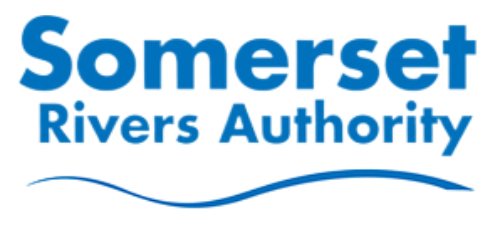Glossary of terms
Term
Definition
Area of Outstanding Natural Beauty (AONB)
Area of countryside that has been designated for conservation due to its significant landscape value.
1 in X-year rainfall event
Expression of the probability or chance of surface water flooding occurring e.g. 1 in 30 year.
Amenity
The pleasantness or attractiveness of a place.
Annual Exceedance Probability (AEP)
A flood or rainfall event with a 1 in 100 (1%) chance of being exceeded in any year has an AEP of 1 in 100 or 1%.
Attenuation
Temporary storage and slow release of surface water.
Biodiversity
The ‘biological diversity’, or variety of all living organisms.
Biodiversity net gain
A strategy for developing land that contributes to the recovery of nature, by providing a measurable improvement in the state of the natural environment compared with its pre-development.
Brownfield
A land use which has previously been developed.
Carbon sequestration
The process of capturing, securing and storing carbon dioxide from the atmosphere.
Climate Change (CC)
Long term variations in global temperature and weather patterns caused by natural and human actions.
Climate change allowances
Predictions of anticipated change to river flow, rainfall and sea levels due to increased temperatures.
Conveyance
The transport of water.
Culvert
Where a watercourse flows through a pipe or conduit, often underground.
Defra
Department for Environment, Food and Rural Affairs.
Environment Agency (EA)
Has a strategic overview role for flood and coastal erosion risk management and permissive powers for the management of Main Rivers.
Environmental gain
Working on the principles of biodiversity net gain and expanding to include flood protection, recreation and improved water and air quality.
Flood
The temporary inundation by water of property or land not normally covered with water.
Flood & Water Management Act 2010 (FWMA)
Part of the UK Government’s response to Sir Michael Pitt’s Report on the Summer 2007 floods, the aim of which (partly) is to clarify the legislative framework for managing local flood risk in England.
Fluvial Flooding
Flooding resulting from water levels exceeding the bank level of a river.
Foul sewer
Sewer which carries wastewater (e.g., from toilets, sinks, showers and kitchen appliances) to a sewage works for treatment.
Green infrastructure
Network of multi-functional green space and other green features, urban and rural, which can deliver quality of life and environmental benefits for communities
Greenfield
A land use which has not previously been developed, and is in its vegetated state.
Groundwater flooding
Occurs when water levels in the ground rise above the natural surface. Areas underlain by permeable strata (e.g. Chalk) are particularly susceptible.
Gully
Drainage pit covered by an open metal grated, located at the edge of a road. Drains rainwater from the road into the sewerage system.
Habitat
An area and resources used by a living organism, animals or plants.
Infiltration
The process of water soaking into the ground.
Internal Drainage Board (IDB)
A public body that manages water levels in an area, known as an internal drainage district, where there is a special drainage need.
Lead Local Flood Authority (LLFA)
County council or unitary authority which lead in managing local sources of flood risk (i.e. flooding from surface water, groundwater and ordinary watercourses).
Local Flood Risk
Flooding from sources other than Main Rivers, which principally concerns surface runoff, groundwater and Ordinary Watercourses. Somerset Council has a responsibility under the Flood & Water Management Act to manage flooding from these sources.
Local Planning Authority (LPA)
The local government body with the power by law to exercise planning functions for a particular area.
Main River
A large river or stream designated on the Main River Map. The Environment Agency has permissive powers to maintain and carry out flood risk management work on main rivers.
Multiple Benefits
As well as reducing the risks to people and property, flood risk management (e.g. sustainable drainage) can bring economic, environmental and social benefits.
Nationally Significant Infrastructure Projects (NSIP)
Large scale developments relating to energy, transport, water or waste, which require a type of planning consent known as 'development consent'.
Non-Statutory Technical Standards for SuDS
National standards published by Defra for the design, maintenance and operation of sustainable drainage systems.
Nutrient neutrality
A means of ensuring that any developments occurring within vulnerable watercourse catchments does not cause an increase in harmful nutrient levels. Requirement for new residential developments in and around areas with environmental designations.
Ordinary Watercourses
All watercourses which are not designated as ‘Main Rivers’. Lead Local Flood Authorities and Internal Drainage Boards have permissive powers to carry out flood risk management work on ordinary watercourses.
Public sewer
Sewers owned and maintained by a Sewerage Company (e.g. Wessex Water).
Retrofit SuDS
Where SuDS features are incorporated into an already developed area, and replace or enhance an existing drainage system.
Return period
Average of how often a flood/rainfall event of a certain magnitude will occur. Expressed as the probability or chance of flooding e.g. 1 in 30 years.
Riparian Owner
The owner of land that is next to a watercourse or has a watercourse running through or beneath it.
Risk
In flood risk management, risk is defined as a product of the probability or likelihood of a flood occurring, and the consequence of the flood.
Risk Management Authorities (RMAs)
Organisations that have a key role in flood and coastal erosion risk management as defined by the Flood & Water Management Act 2010.
Runoff rate
Flow rate of surface water.
Runoff volume
Volume of surface water.
Site of Special Scientific Interest (SSSI)
A protected area designated for conservation due to its natural or geological value.
Source control
Managing rainfall when and where it falls.
Special Area of Conservation (SAC)
Areas protected due to the presence of one or more special habitats and/or species.
Strategic Flood Risk Assessment (SFRA)
These are produced by each District or Unitary Authority to give an assessment of flood risk from all sources and its implications for land use planning.
SuDS Treatment / Management Train
SuDS features designed in series to manage the runoff rate/volume and water quality of surface water runoff in stages, as in a natural catchment.
Surface water sewer
Sewer which carries rainwater directly to a watercourse.
Surface water/runoff
Rainwater (including snow and other precipitation) which is on the surface of the ground (whether or not it is moving), and has not entered a watercourse, drainage system or public sewer. The term 'surface water' is used generically to refer to water on the surface and is often associated with periods of intense rainfall.
Sustainable Drainage System (SuDS)
A range of techniques for managing runoff to reduce the quantity of water making its way into the sewer system
Swale
A shallow vegetated channel designed to conduct and retain water, but also may permit infiltration. The vegetation filters particulate matter.
Water Framework Directive (WFD)
European Union legislation which introduced a comprehensive river basin management planning system to help protect and improve the ecological health of rivers, lakes, estuaries, and coastal and groundwaters. Replaced in England and Wales by The Water Environment (Water Framework Directive) Regulations 2017.
Water quality
The chemical, physical and biological characteristics of water.
Water quantity
The rate and volume of surface water runoff.

